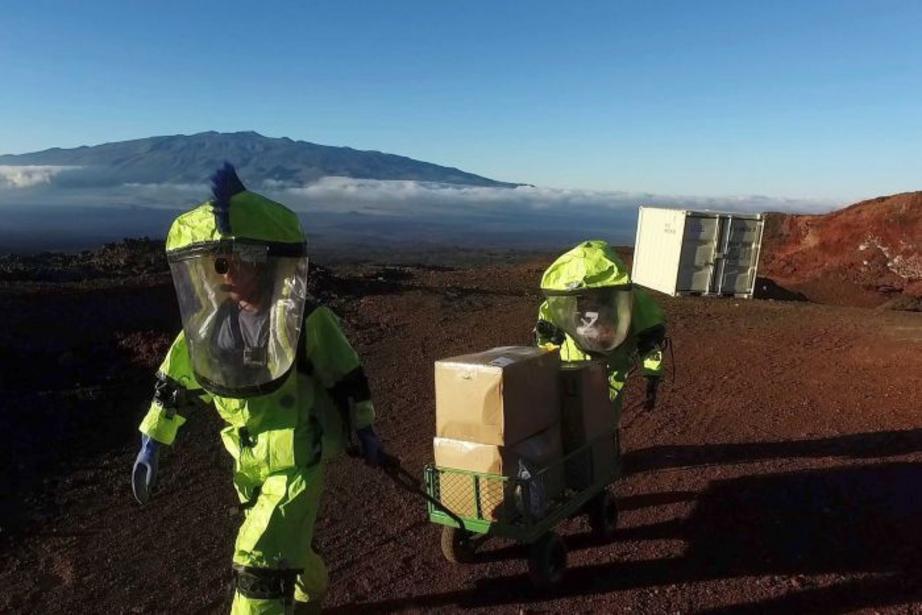Mars on Hawaii: NASA psychology subjects emerge from eight months of isolation
After eight months of living in isolation on a remote Hawaii volcano, six NASA-backed research subjects will emerge from their Mars-like habitat on Sunday and return to civilization.
Key points:
- The team wore sensors to gauge their mood, voice levels and other variables
- Virtual reality devices helped them to escape to tropical beaches or other landscapes
- NASA has spent $3.13 million on studies at the Hawaii facility
Their first order of business after subsiding on mostly freeze-dried and canned food: feast on fresh-picked pineapple, papaya, mango, locally-grown vegetables and a fluffy, homemade egg strata cooked by their project's lead scientist.
The crew of four men and two women were quarantined on a vast plain below the summit of the world's largest active volcano in January.
All of their communications with the outside world were subjected to a 20-minute delay — the time it takes for signals to get from Mars to Earth.
They are part of a study designed to better understand the psychological impacts that a long-term manned mission to space would have on astronauts.
The data they gathered will help NASA better pick crews that have certain traits and a better chance of doing well during a two-to-three year Mars expedition.
The space agency hopes to send humans to the red planet by the 2030s.

Devices monitored compatibility and stress levels
The Hawaii team wore specially-designed sensors to gauge their moods and proximity to other people in the small, 111-square metre dome where they have lived.
The devices monitored, among other things, their voice levels and could sense if people were avoiding one another.
It could also detect if they were next to each other and arguing.
The crew played games designed to measure their compatibility and stress levels.
When they got overwhelmed by being in such close proximity to teach other, they could use virtual reality devices to escape to tropical beaches or other familiar landscapes.
The project's lead investigator, University of Hawaii professor Kim Binsted, said the crew members also kept written logs about how they were feeling.
"This is our fifth mission, and we have learned a lot over those five missions. We've learned, for one thing, that conflict, even in the best of teams, is going to arise," Ms Binsted said.
"So what's really important is to have a crew that, both as individuals and a group, is really resilient, is able to look at that conflict and come back from it."
The project is the fifth in a series of six NASA-funded studies at the University of Hawaii facility called the Hawaii Space Exploration Analog and Simulation, or HI-SEAS.
NASA has dedicated about $3.13 million to the studies at the facility.

